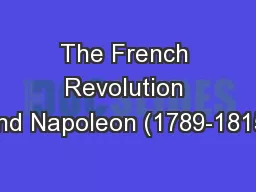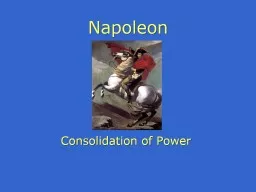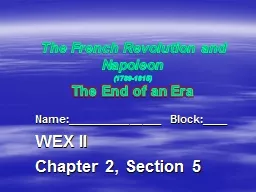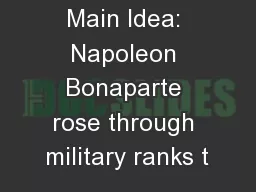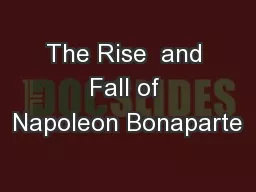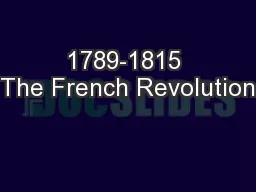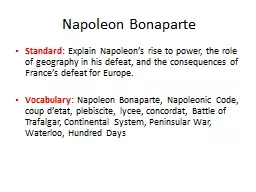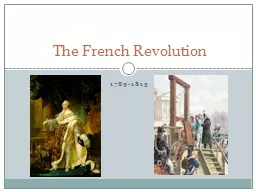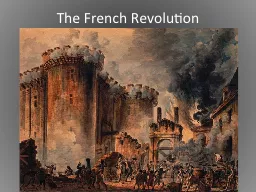PPT-The French Revolution and Napoleon (1789-1815)
Author : celsa-spraggs | Published Date : 2018-03-23
Section Two Creating a New France Bell Work Turn your book to page 171 Preview this section Analyze all pictures read in captions that go along with the picture
Presentation Embed Code
Download Presentation
Download Presentation The PPT/PDF document "The French Revolution and Napoleon (1789..." is the property of its rightful owner. Permission is granted to download and print the materials on this website for personal, non-commercial use only, and to display it on your personal computer provided you do not modify the materials and that you retain all copyright notices contained in the materials. By downloading content from our website, you accept the terms of this agreement.
The French Revolution and Napoleon (1789-1815): Transcript
Download Rules Of Document
"The French Revolution and Napoleon (1789-1815)"The content belongs to its owner. You may download and print it for personal use, without modification, and keep all copyright notices. By downloading, you agree to these terms.
Related Documents

